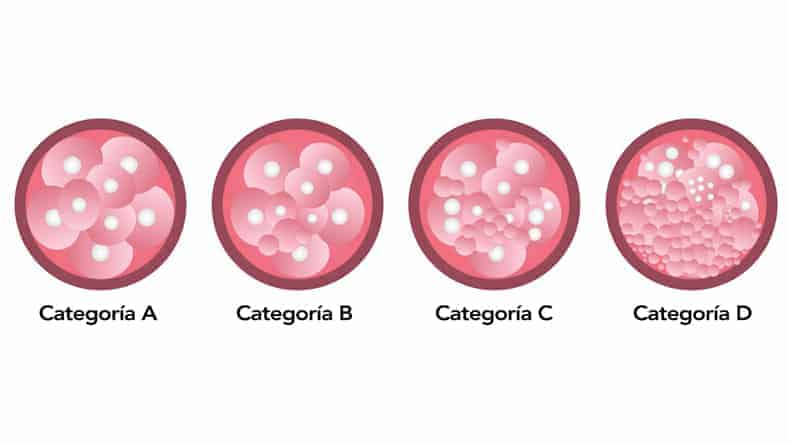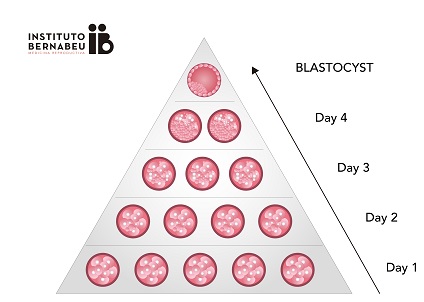
Criteria for embryo classification
Embryos develop from the moment they are fertilised up until transfer to the mother’s uterus and this development process is assessed by embryologists. The embryos that have evolved correctly and are in the best condition are selected for transfer and/or cryopreservation.
Índice
Types of embryos
At Instituto Bernabeu, we categorise embryos in accordance the Association for the Study of Reproductive Biology (ASEBIR) criteria established in 2007 and updated in 2015. Based on this information, there are generally four different categories of embryos:

- Category A: an optimum quality embryo which has the best chance of implanting.
- Category B: a good quality embryo which is very likely to implant.
- Category C: an embryo that is not great quality and which is unlikely to implant.
- Category D: a poor quality embryo which is very unlikely to implant.
Assessment according to embryonic development stage
It is important to point out that embryos are graded into one of these four categories on the day transfer takes place. However, during development prior to this point, they are also assessed daily and different aspects of their morphology are analysed. This is taken into account when they are categorised:

Day 0
Day 0 is when oocyte extraction takes place and when they are inseminated using IVF or ICSI methods.
Embryo on day 1
On day 1, fertilisation is assessed between 16 and 22 hours following insemination. When there are two pronuclei and two polar bodies, then they are called embryos. Initial embryo division is assessed between 25 and 27 hours.
Embryo on day 2 – 3
Days 2 and 3 take into account aspects such as the number of cells, the number of nuclei in each cell, symmetry, the extent of fragmentation, the presence of vacuoles and the appearance of the zona pellucida. The ideal number of cells on day 2 is 4, and on day 3 the ideal number of cells is 8.
Embryo on day 4

The embryo begins to turn into a blastocyst on day 4 and it develops from a state in which the cells can be observed individually into a compact mass known as the morula. On this day of embryo development, observation takes into account any increases in the number of cells in the embryo and how compact they are and if all the cells are included or if some have been left out.
More information about “embryo transfer in day 4”.
Embryo on day 5 – 6
Embryos complete their transformation into blastocysts between days 5 and 6 following fertilisation. It is possible to see and identify certain parts during this phase of development (refer to the image on the side of the page): the blastocoel (internal cavity), the zona pellucida (external layer surrounding the embryo) and the trophoectoderm (layer of external cells surrounding the blastocysts and which will become the placenta) and the internal cell mass (small group of cells from which the foetus will develop). Blastocysts are categorised based on an assessment of three aspects: the extent of expansion, the condition of the internal cell mass and the condition of the trophoectoderm.
It is important to point out that both the selected category and the various assessments that are performed during development determine the quality of development and the chances of gestation. However, not even a category A embryo is a guarantee of success and not even a category D embryo necessarily means failure. Embryo implantation is a complex process that is not only linked to embryo quality but also to a number of other factors such as endometrial receptivity, the mother’s age and immunological factors.
IT MAY ALSO BE OF INTEREST TO YOU
- In vitro fertilization at Instituto Bernabeu
- Embryo transfer
- Blastocyst embryo: What it is, advantages, types and classification according to its quality
- Embryonic arrest, why don’t all of my embryos develop equally?
- Embryo normal and abnormal division
- NEGATIVE IVF: Everything you need to know after a failed IVF
